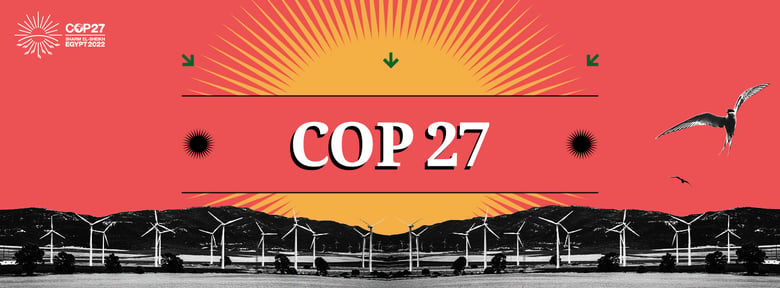Now that the dust has (mostly) settled on COP27, some key takeaways have come into focus.
We wrote about shining a light on recycling and the circular economy in the lead-up to the conference. Here’s why there is still work to be done.
Progress – with room for improvement
To many, this year’s summit was a frustrating one, especially in terms of concrete outcomes to address emissions. There was, however, encouraging progress on loss and damage funds for the nations hardest-hit by climate change.
As the Ellen MacArthur Foundation have noted, such funds are necessary and should be supported — but they limit focus to the effects of climate change rather than the causes.
To offer real support, practices like exporting plastic waste (which goes on to pollute carbon sinks in developing nations) also need to be tackled head-on. In the UK, a recent call by the Environment, Food and Rural Affairs committee to ban all plastic exports by 2027 reflects the urgent need to process waste more efficiently at home.
The committee’s motivation? “To reduce the country’s contribution to global plastic waste pollution.”
Raising the question of consumption

WRAP in particular should be commended for their efforts to bring the circular economy to the fore in Sharm el-Sheikh. It’s a subject that did not get as much attention at COP26, but has a direct impact on topics higher up the COP agenda like biodiversity loss and fossil fuel reliance.
While virgin plastic production represents a small percentage of fossil fuel consumption today, for example, the oil sector will increasingly rely on it as we move towards renewable energy sources. It’s encouraging that organisations like WRAP are working to communicate the interconnected nature of these issues on the world stage.
The call for a circular economy action plan
 Miranda Schnitger, the Ellen MacArthur Foundation’s Climate Lead, was right to note that at the next COP event (and in general) more regulatory action is needed on our collective production and consumption — which is responsible for 45% of emissions.
Miranda Schnitger, the Ellen MacArthur Foundation’s Climate Lead, was right to note that at the next COP event (and in general) more regulatory action is needed on our collective production and consumption — which is responsible for 45% of emissions.
The outcomes of COP27 may not have lived up to all expectations, but the widespread reaction and discussion have made the circular economy’s crucial importance clear. At Greyparrot, we’ve made it our mission to drive that economy with a more efficient, transparent waste sector.




